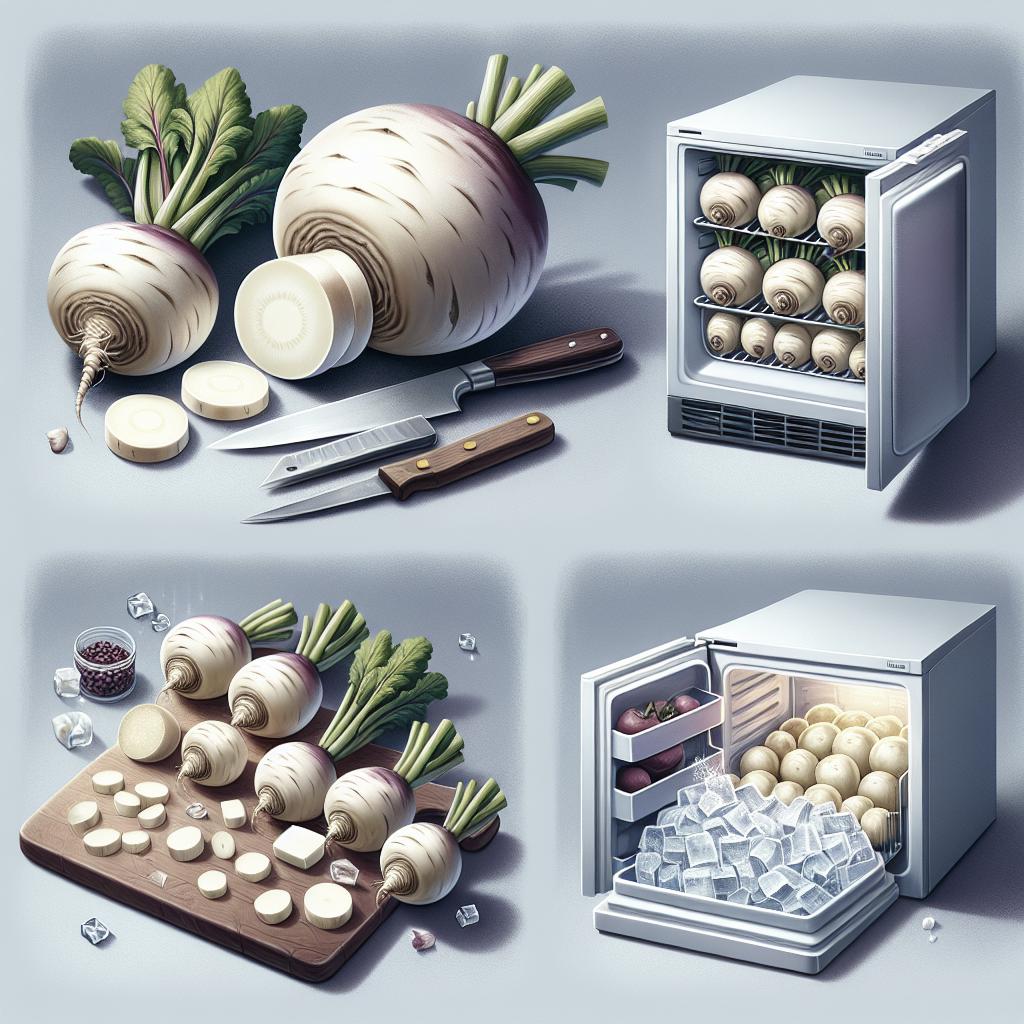— Freezing turnips is a handy skill for preserving their freshness, taste, and nutritional value. Whether you have a surplus of fresh turnips from your garden, scored a great deal at the farmer’s market, or simply want to enjoy this vegetable year-round, freezing is an effective method. This guide will walk you through four different ways to freeze turnips: fresh, mashed, and roasted. It will also provide useful tips for using freezer bags to ensure your turnips remain in top condition. By the end of this article, you’ll be well-equipped to freeze turnips in various forms, making meal prep easier and minimizing food waste. —
How to Freeze Fresh Turnips
Freezing fresh turnips starts with selecting the highest quality turnips. Look for firm, unblemished turnips with smooth skin. You’ll first need to wash them thoroughly under running water to remove any dirt or pesticide residue. Pat them dry with a clean towel before proceeding to the next step. Next, peel the turnips using a vegetable peeler or a sharp knife to remove the tough outer skin. Once peeled, cut the turnips into cubes or slices, depending on how you plan to use them later. Blanching is an essential step before freezing fresh turnips; it helps to preserve their color, texture, and flavor. Boil a large pot of water and prepare an ice bath. Submerge the turnip pieces in boiling water for about 2-3 minutes, then quickly transfer them to the ice bath for another 2-3 minutes to halt the cooking process. After blanching, drain the turnip pieces and pat them dry. Spread them out on a baking sheet lined with parchment paper and freeze them initially for a couple of hours to prevent clumping. Once they are individually frozen, transfer them to airtight freezer bags or containers, label them with the date, and store them in the freezer. Fresh turnips can be stored this way for up to 8-10 months. —
How to Freeze Mashed Turnips
Freezing mashed turnips is a great option if you plan to use them as a side dish or in recipes like casseroles and soups. Begin by peeling and cubing the turnips, and then cook them until tender. You can either boil them in salted water for about 20 minutes or steam them until they easily break apart with a fork. Once the turnips are cooked, drain any excess water and mash them using a potato masher, food processor, or hand mixer until smooth. You can add butter, cream, or your choice of seasonings for added flavor, but keep in mind that some additives might alter the texture slightly when thawed. Allow the mashed turnips to cool completely before transferring them to freezer-safe containers or resealable bags. If using bags, remove as much air as possible to prevent freezer burn. Label the containers or bags with the date and freeze them. Mashed turnips can be stored in the freezer for up to 6 months. When ready to use, thaw in the refrigerator overnight and reheat on the stovetop or in the microwave. —
How to Freeze Roasted Turnips
Roasted turnips have a unique, caramelized flavor that makes them a delightful addition to many dishes. To freeze roasted turnips, start by peeling and cutting the turnips into 1-inch cubes. Toss the cubes in olive oil, salt, pepper, and any preferred herbs or spices like rosemary or thyme. Preheat your oven to 425°F (220°C) and spread the seasoned turnip cubes in a single layer on a baking sheet. Roast them for 25-30 minutes, stirring once or twice to ensure even cooking. The turnips should be golden brown and tender when done. Allow the roasted turnips to cool completely before transferring them to freezer bags or airtight containers. For easier portion control, consider flash freezing the roasted turnip cubes on a baking sheet for a couple of hours before transferring them to freezer bags. Label the bags with the date and freeze them. Roasted turnips can be stored in the freezer for up to 8 months. To enjoy, reheat them in the oven or on the stovetop until warmed through and crispy. —
Tips When Using Freezer Bags
Using freezer bags efficiently can make a significant difference in preserving the quality of your frozen turnips. First and foremost, always opt for high-quality, heavy-duty freezer bags designed to withstand low temperatures without tearing or leaking. Properly sealing and labeling the bags can prevent freezer burn and ensure you use the oldest items first. When filling freezer bags with turnips, whether fresh, mashed, or roasted, remove as much air as possible before sealing. Air can cause freezer burn, which affects both the texture and flavor of the turnips. Consider using a vacuum sealer if you have one, as it provides the best air removal. If not, the straw method also works well: insert a straw into the partially closed bag, suck out the air, and quickly seal the rest of the zipper. Label each bag with the date of freezing and the contents. It’s easy to forget what’s inside once frozen, especially with multiple bags of different vegetables. Clear labeling helps you keep track of the freshness and rotation of your frozen foods. Store the bags flat in the freezer to save space, then stack them once they’re solid. This method is efficient and helps maintain an organized freezer. —
Final Thoughts
Freezing turnips is a versatile way to preserve their availability and nutritional benefits throughout the year. Whether you choose to freeze them fresh, mashed, or roasted, or use efficient methods with freezer bags, you are ensuring that these nutritious vegetables are ready for various culinary uses whenever you need them. Below is a summary table outlining the main points covered. “`html
| Method | Preparation Steps | Freezing Tips | Shelf Life |
|---|---|---|---|
| Fresh Turnips | Wash, peel, cut, blanch | Flash freeze, then transfer to bags | 8-10 months |
| Mashed Turnips | Peel, cube, cook, mash | Cool before packing, remove air from bags | 6 months |
| Roasted Turnips | Peel, cube, season, roast | Flash freeze, then transfer to bags | 8 months |
| Using Freezer Bags | Remove air, seal bags, label clearly | Use heavy-duty bags, store flat | N/A |
“`


